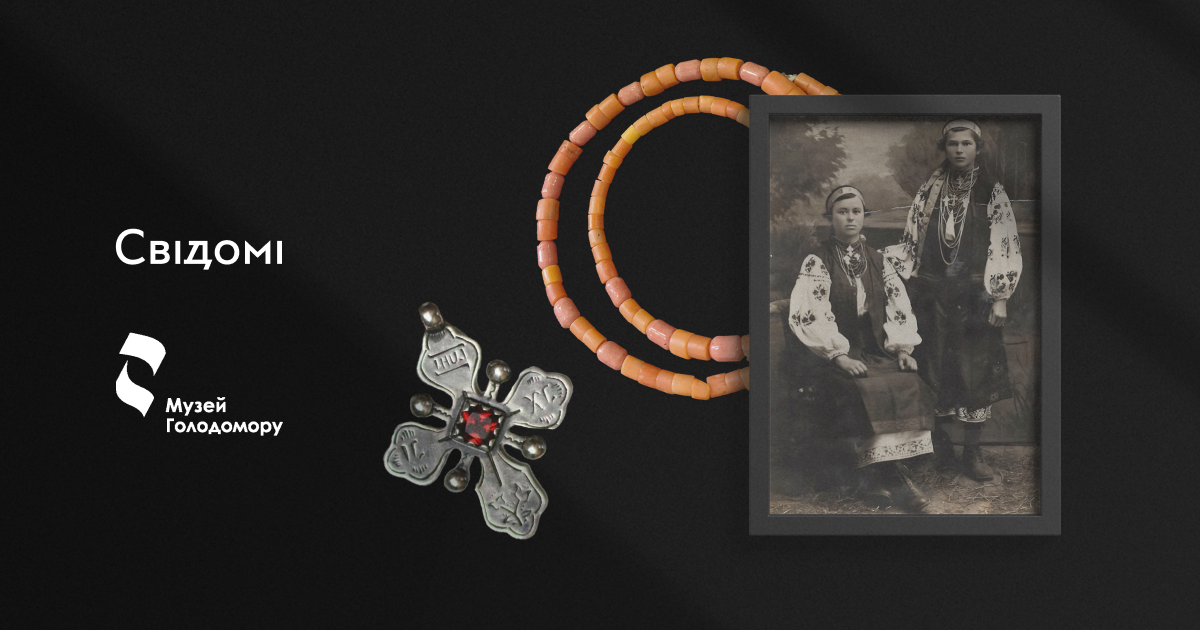Beads of fate: how jewellery saved Ukrainians during the Holodomor
Holodomor Museum

Ms Sofia was born in 1940 in the village of Tarasivka in Poltava Oblast. She was the fifth child in the peasant family of Yelyzaveta and Panteleimon Zholob (out of six children, only four survived in the family - the eldest sister and youngest brother died in childhood).
Her mother came from a wealthy family - she inherited a house and a plot of land from her grandfather. The land fed its owners: in the period of the New Economic Policy, which provided for the national economy, there was enough for both taxes and the family. But it did not last long. The Kremlin hatched a new plan to rob Ukrainian peasants.
When collectivization began, Sofia’s father, Panteleimon, did not want to go to the collective farm - he had to. In 1933, all the property and the horse, as well as the land, were taken to the collective farm.
"My father sometimes came to his horse - once well-fed and well-groomed, but now - just skin and bones. It recognized his master and quietly whinnied... Even after many years, when dad told this, he always cried, - Sofia recalls. - He also could not hold back tears when he showed me where our land was. And I, as a child, could not understand why he called that land ours and why he cried."
Tarasivka experienced the most terrible times in 1932-1933 when genocide was committed on Ukrainian lands. Ukrainians were suffocated with exorbitant taxes, and everything was taken out.
"Even the packet of beans that was found at the bottom of the chest box was taken away," Sofia recalls her parents' stories. "And when the activist saw milk in the mug, he poured it on the floor and rubbed it with his boot."
Panteleimon Zholob understood quickly what was going on and managed to hide something. He buried the grain in the garden, and, in winter, when it got worse, he visited the hiding place. But first, he was waiting for a blizzard so that the snow would hide the tracks. Then he poured the grain into bags and lowered it into the well.
But it was not enough for the family survival in which two boys, Hryhorii and Ivan, were growing up.
In the photo from the 1920s, where the camera captured my mother's sister Hanna with a friend, you can see abundant and rich beads on both girls. Sofia's mother, Yelyzaveta, had a lot of jewellery too. It became a real salvation for the family.
"I know that my father used to go to the village of Moskovskyi Bobryk in the Sumy Oblast to exchange things for food - my mother's red boots and jewellery. Sometimes my mother used to exchange earrings and beads for grain with the keeper of the collective farm storeroom. "The grain was lying there and rotting while people were dying en masse in the village," Sofia recalls. "In the end, all that was left was a thread of beads, which my mother never took off, and one gold earring (in those days, they said, in order not to get scrofula, you should wear gold, so she kept one earring and changed the other)."
Thanks to that, the Zholob family survived. However, four children died in aunt Uliana's family, Sofia recalls. My aunt's family was dekulakized before the Holodomor - they were evicted to the village of Zholoby, where the conditions for survival were the worst.
"My aunt cried for all the children, but most of all for the elder Hrysha. A 15-year-old teenager, already swollen, was beaten to death by a foreman because the boy did not have the strength to go to work," the woman says.
The woman admits that her grandmother told her the most about the Holodomor, while her parents were mostly silent.
"We used to walk through the village, and my grandmother would say: "Do you know Uliana Kramarenko? Here, her father died with a sparrow in his hand - he did not have time to eat it. And here there was a pile of human bodies: they were collected here and then loaded onto a carriage and taken away to be buried," Sofia retells.
Sofia's mother began to tell her grandchildren about the Holodomor; she gave one of her granddaughters the surviving beads, which became a symbol of grief and salvation in 1932-1933.
Then, in 1932-1933, Ukrainians were deprived not only of bread but also everything valuable that the families had - jewellery, embroidered shirts, towels, and handkerchiefs. In order to survive, people themselves carried them to markets and exchanged them for food.
That was another way of depriving Ukrainians of their heritage and memory.


